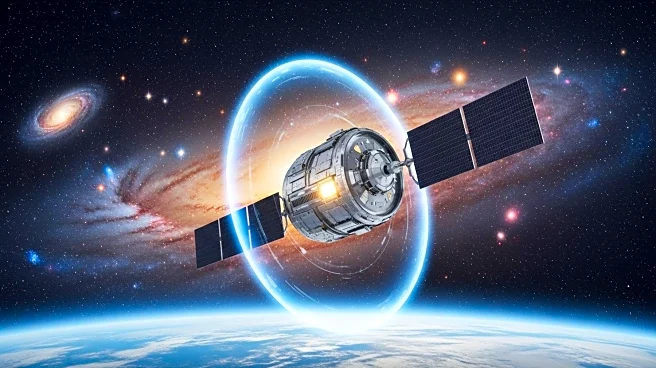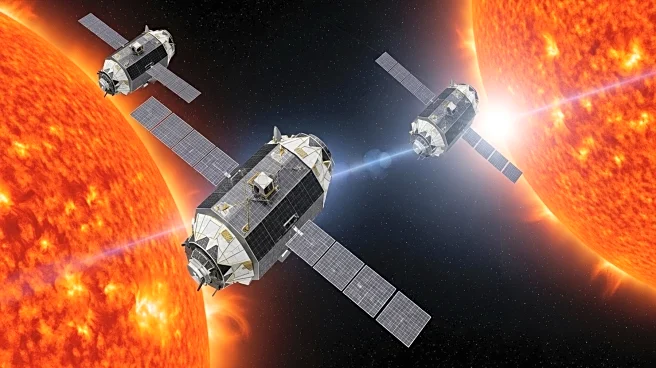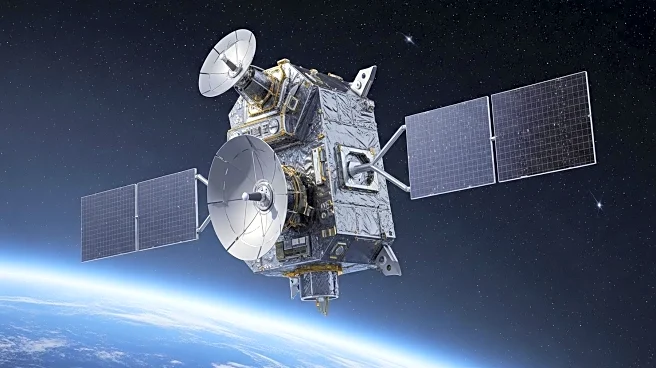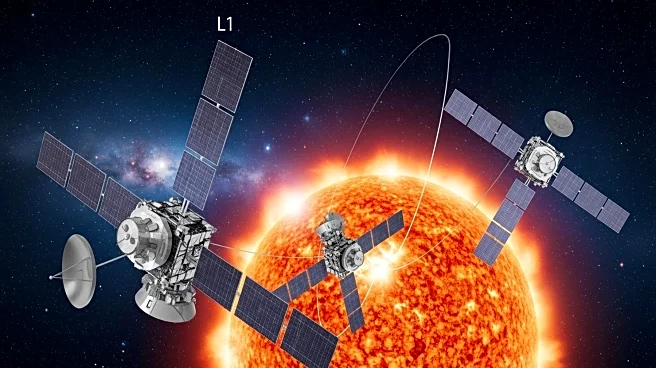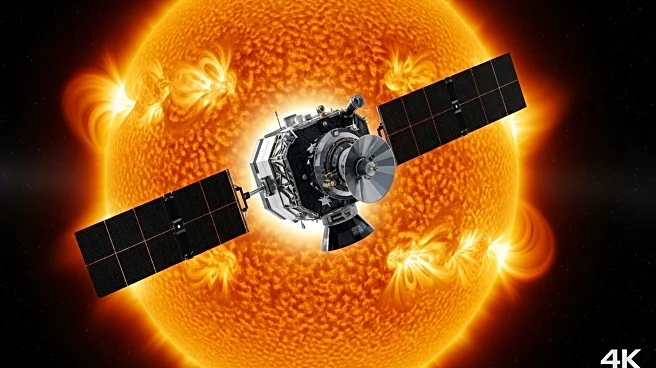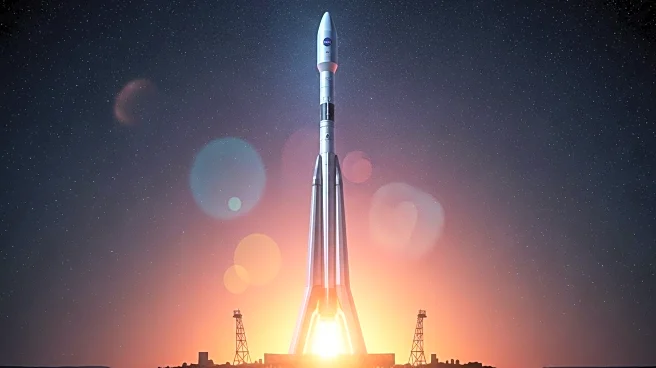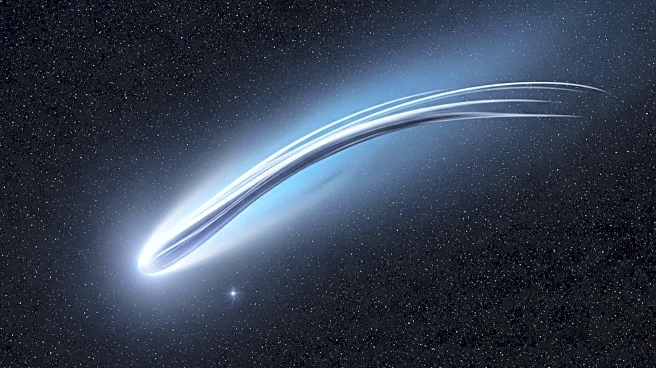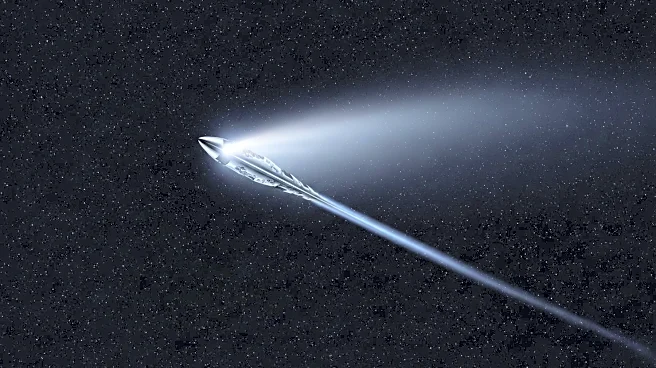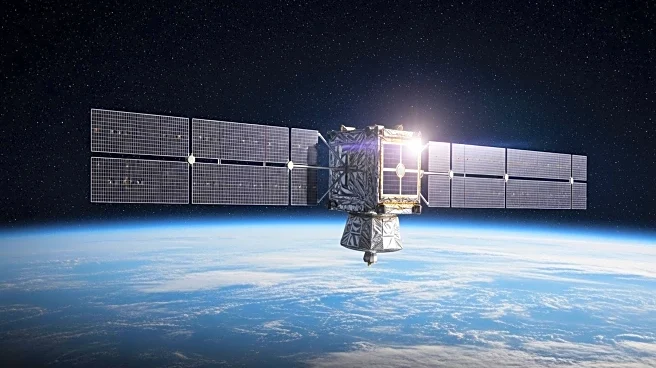What's Happening?
NASA is set to launch the Interstellar Mapping and Acceleration Probe (IMAP) on September 23, 2025, to explore the heliosphere's boundary, known as the heliopause. This mission aims to provide a detailed map of the solar system's edge, where the Sun's influence ends and interstellar space begins. Positioned at the Earth-Sun Lagrange Point 1, IMAP will utilize ten advanced instruments to capture particles streaming from interstellar space, offering 30 times higher resolution than previous missions. The heliosphere acts as a protective shield, deflecting harmful cosmic radiation, and understanding its boundary is crucial for space exploration and protecting satellites and astronauts from solar storms.
Why It's Important?
The heliosphere's boundary is vital for shielding Earth and the solar system from cosmic radiation. Mapping this boundary helps scientists understand how the Sun's protective bubble interacts with the galaxy, which is essential for planning future deep-space missions. As astronauts venture beyond the heliosphere, they will face increased radiation exposure, making IMAP's data crucial for designing spacecraft with adequate protection. Additionally, understanding the heliosphere's dynamics can improve space weather forecasting, protecting infrastructure from solar storms. This mission also contributes to broader astrophysical research, offering insights into cosmic ray filtration and particle acceleration processes.
What's Next?
Following its launch, IMAP will begin its primary mission, expected to last at least two years, with potential extensions. The spacecraft will continuously monitor the solar wind and provide real-time alerts for solar storms, enhancing space weather models. Scientists anticipate new discoveries about the heliopause's structure and behavior, which could refine our understanding of the solar system's interaction with the galaxy. The mission's findings may influence future space exploration strategies, particularly regarding radiation protection for interstellar travel. IMAP's collaboration with existing missions like IBEX will provide comprehensive data on the heliosphere's dynamics.
Beyond the Headlines
IMAP's exploration of the heliosphere's boundary has implications for understanding cosmic boundaries on larger scales, such as astrospheres around other stars and galactic boundaries. The mission's findings could inform theories about the heliosphere's role in Earth's climate and biodiversity over geological time. As scientists map this invisible frontier, they contribute to the broader narrative of humanity's place in the universe, transforming theoretical constructs into tangible data. This endeavor not only advances scientific knowledge but also captures the public imagination, akin to early explorers charting unknown seas.

